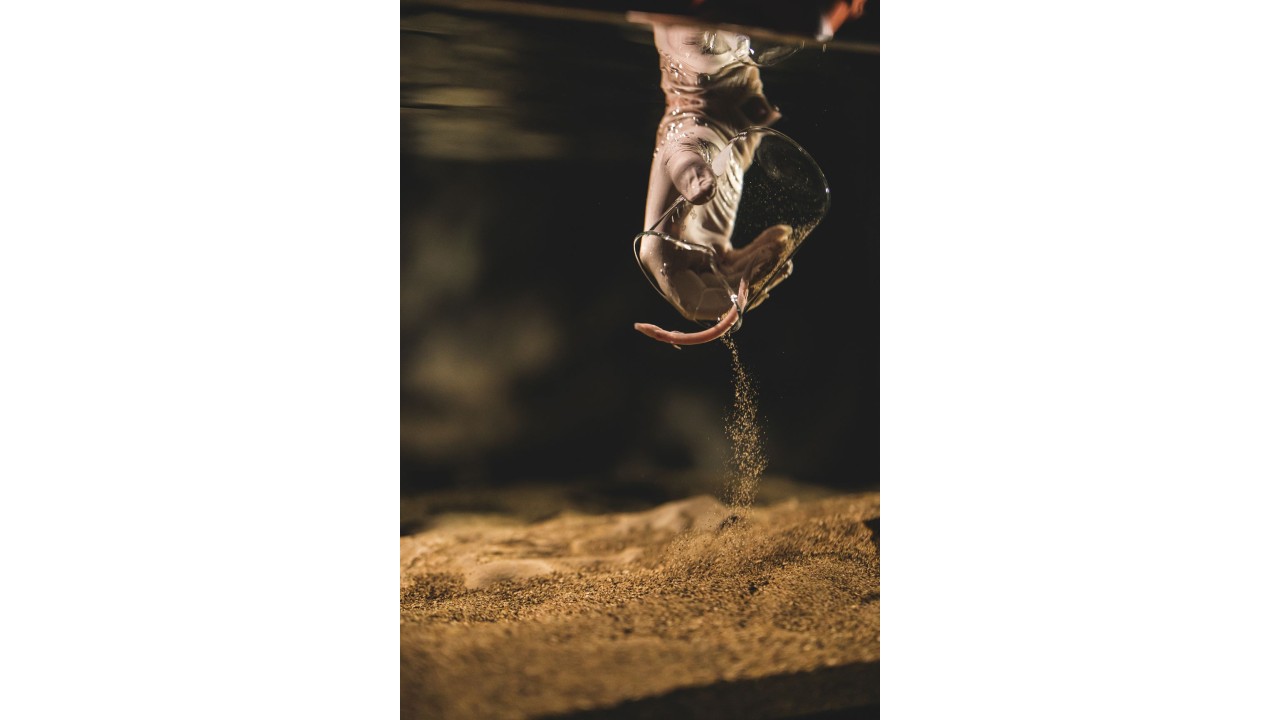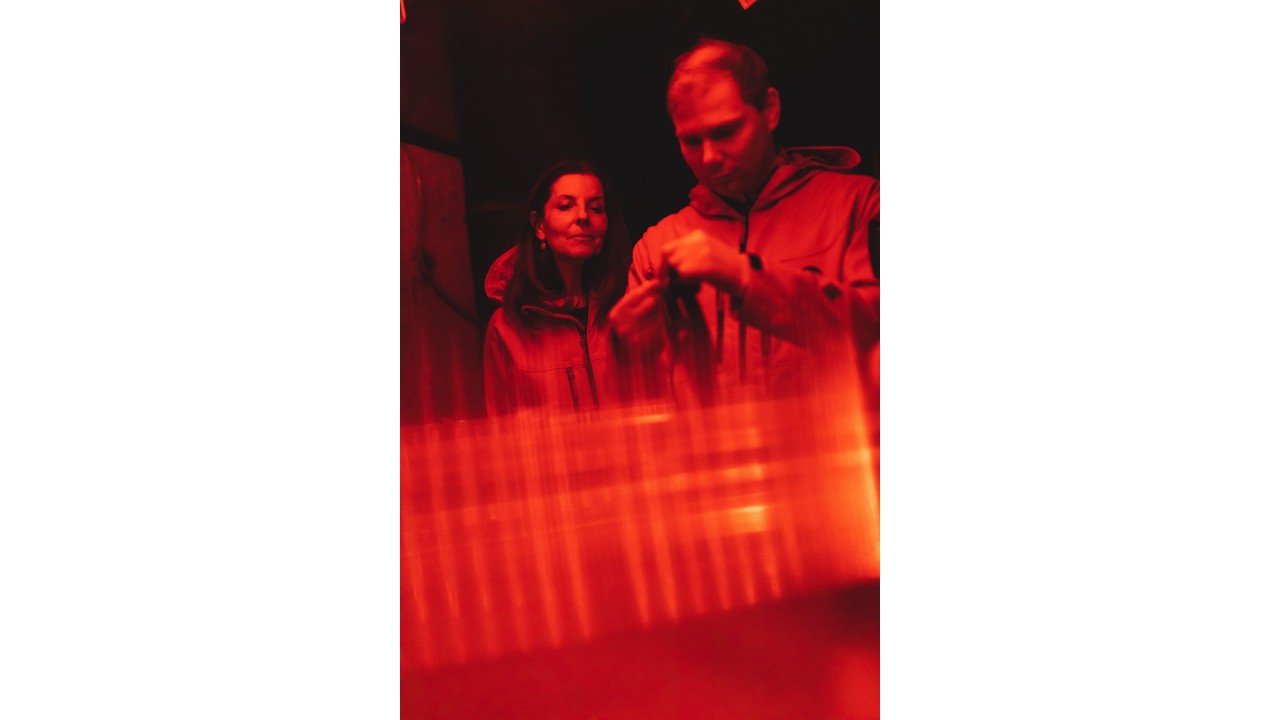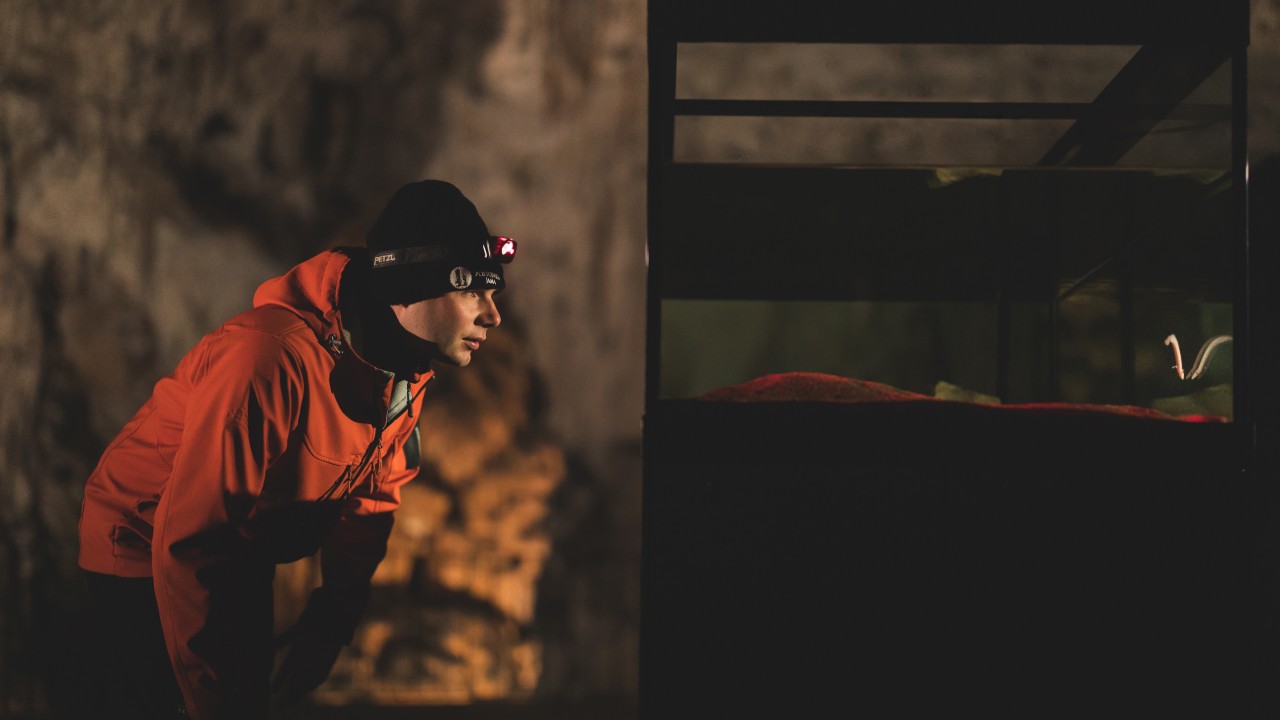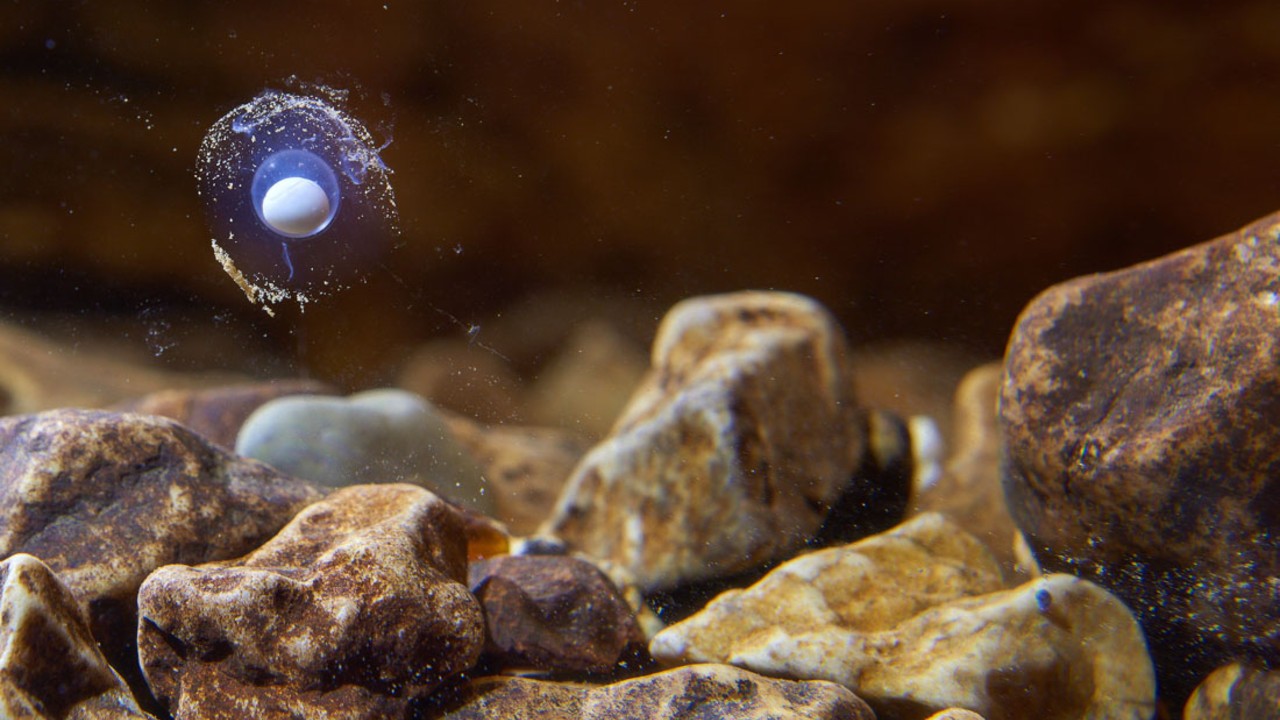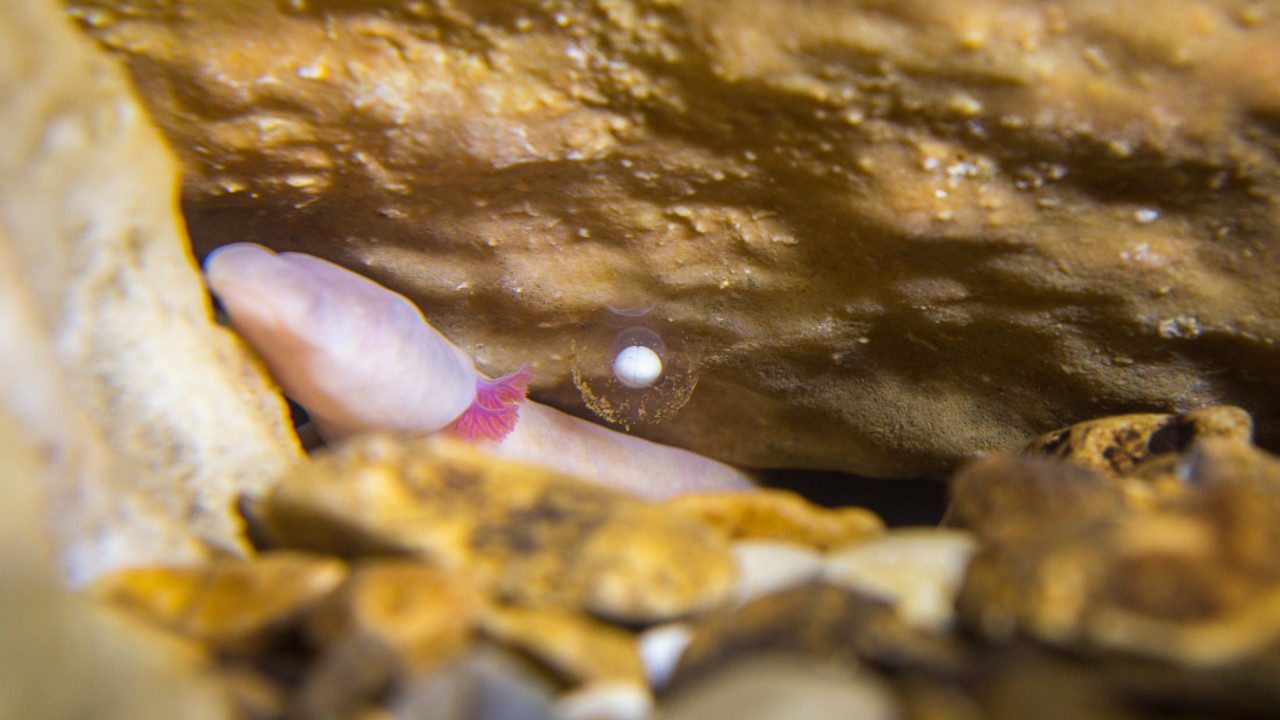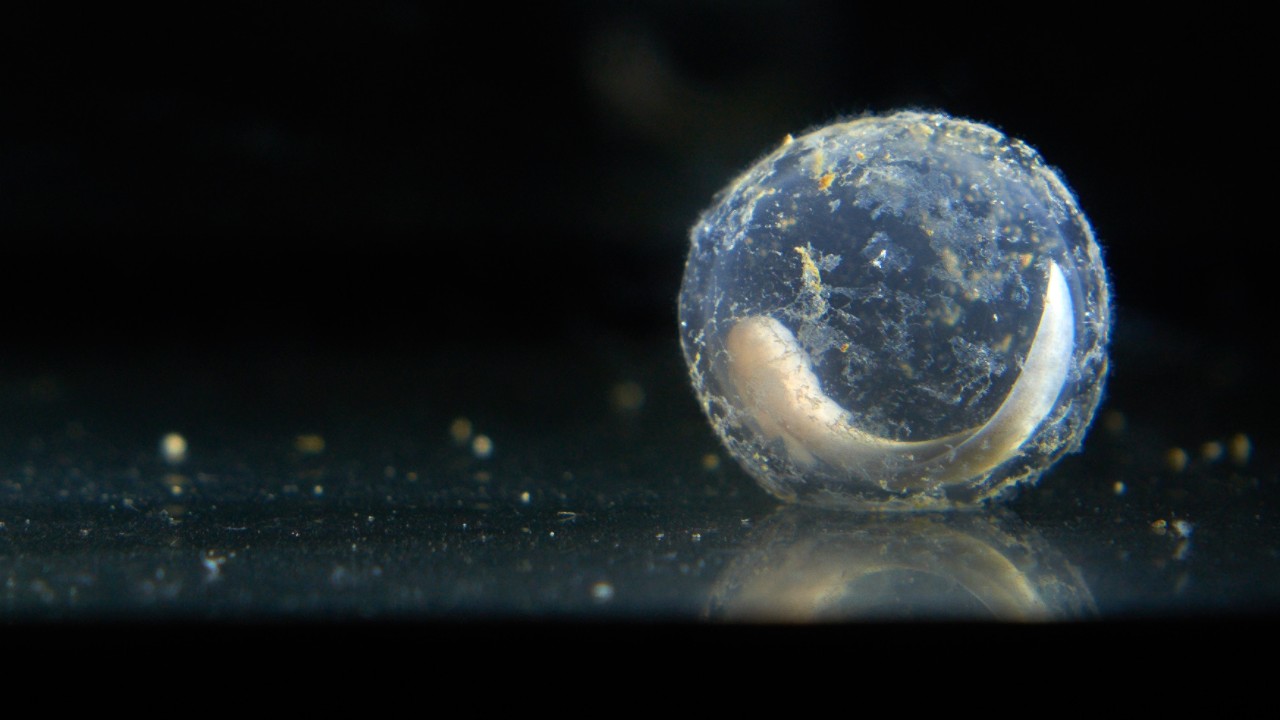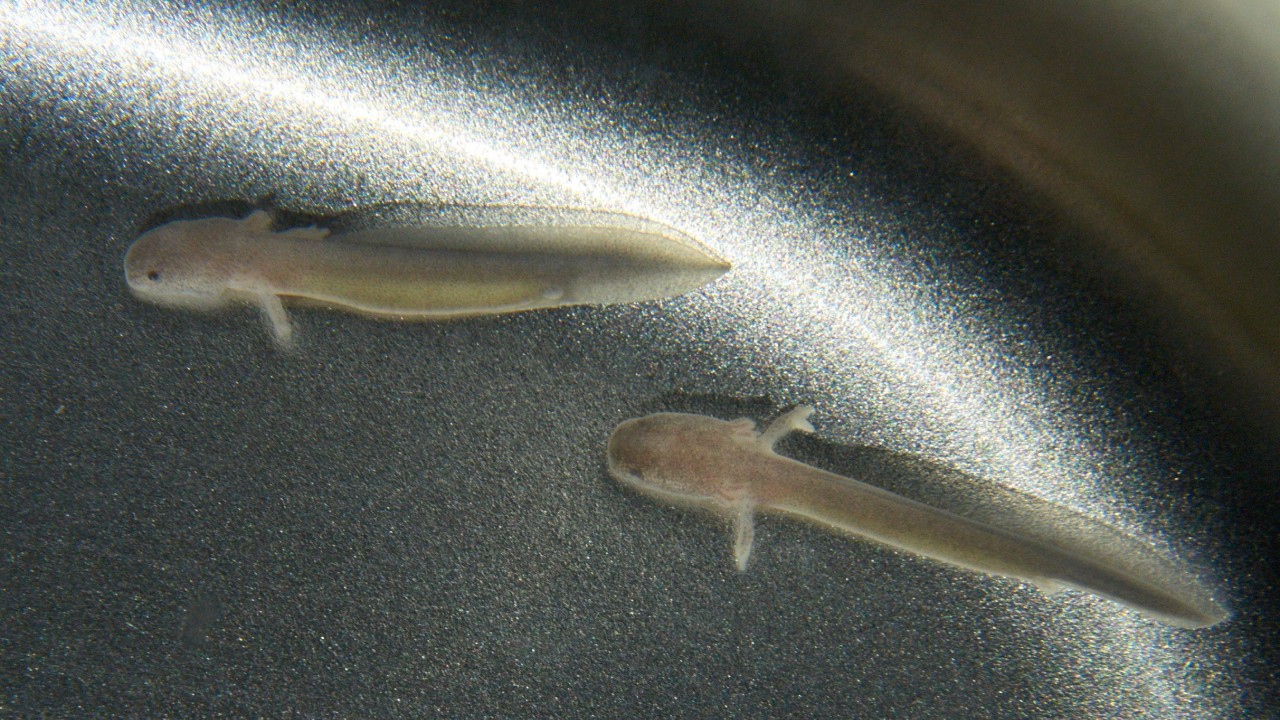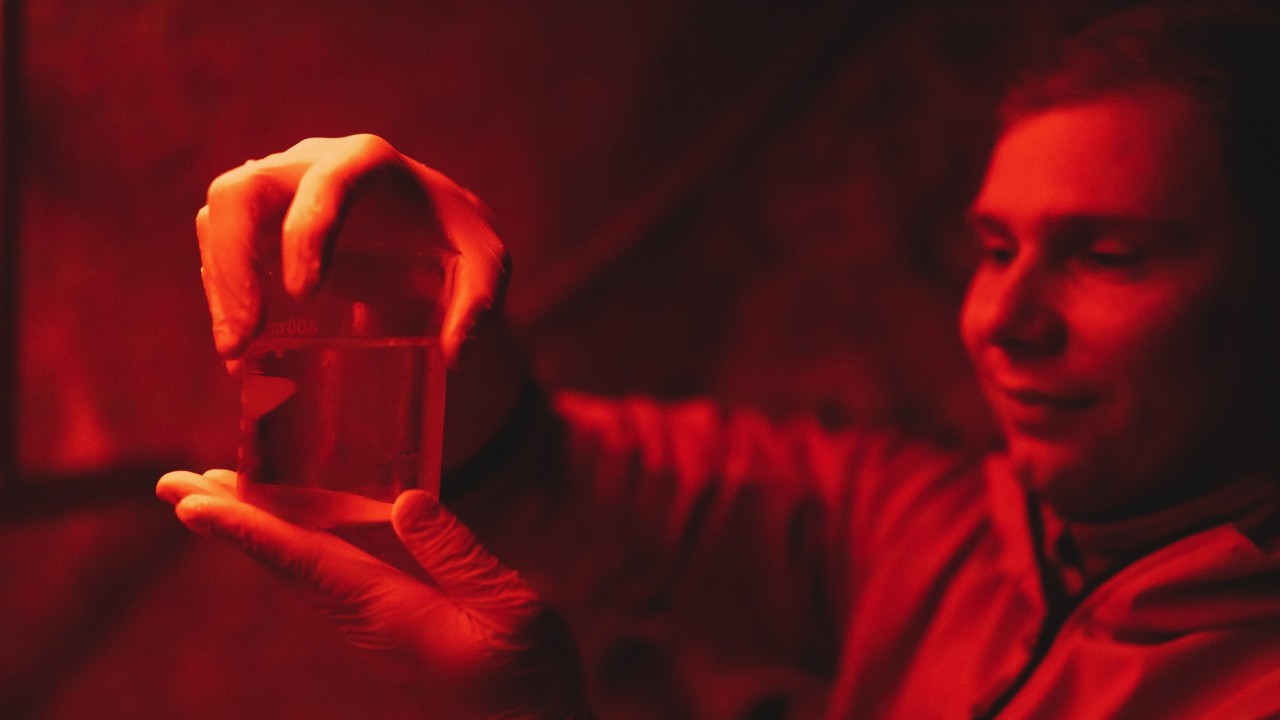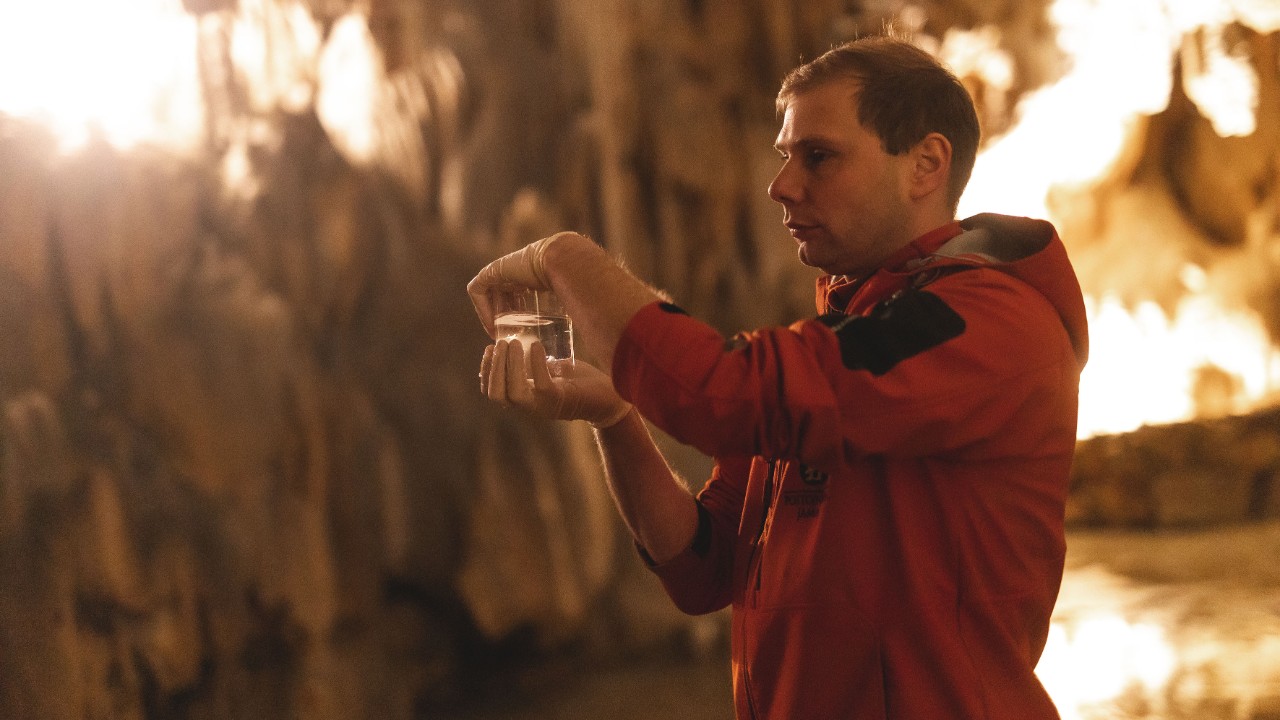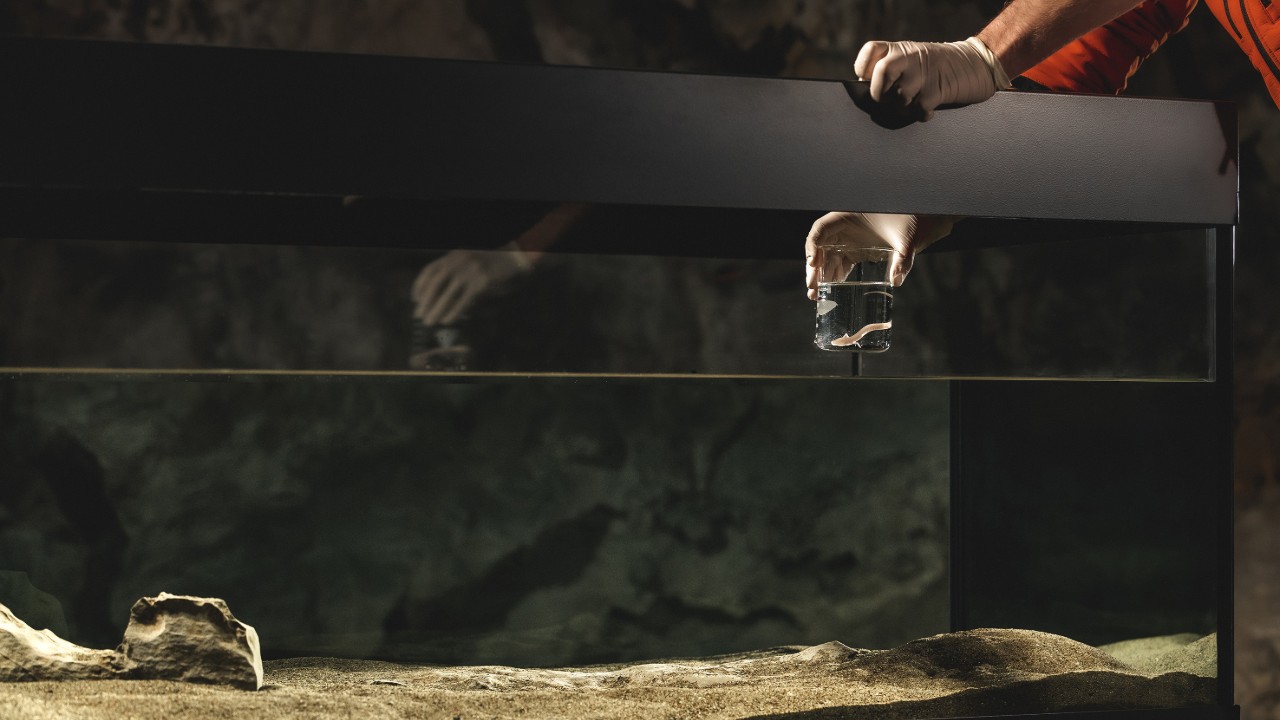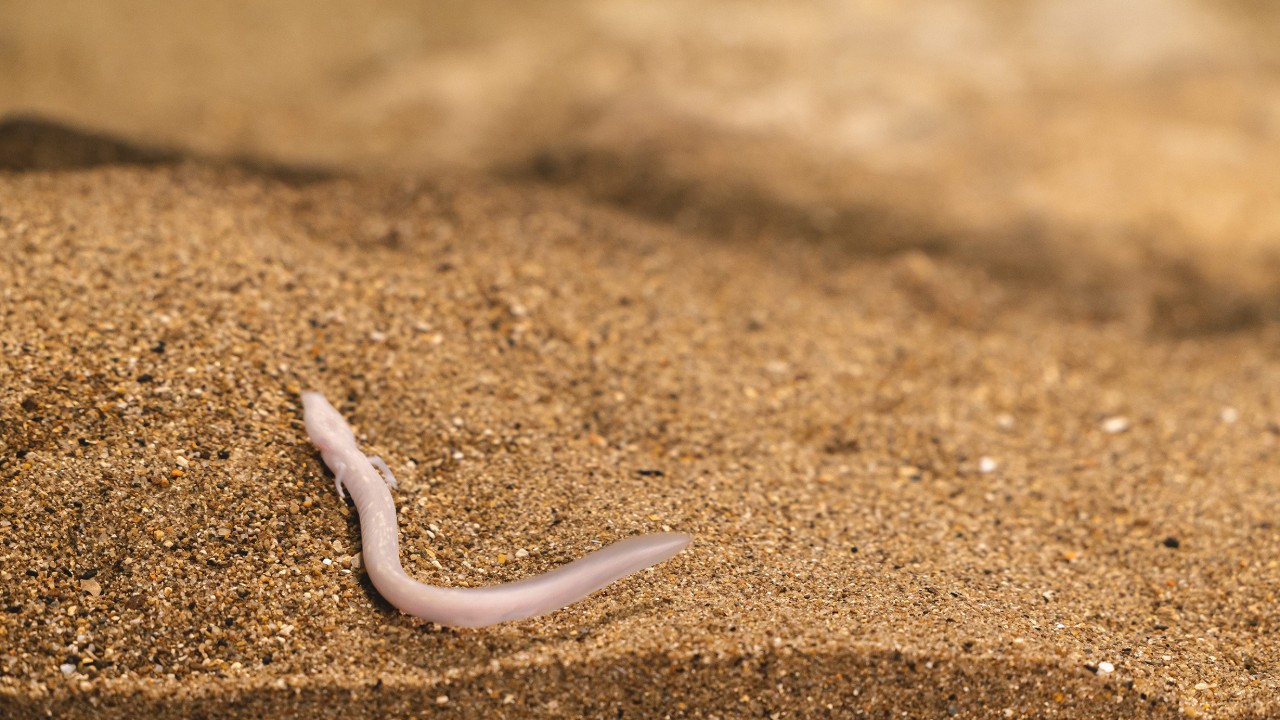It’s finally time to meet the world-famous Baby dragons
After Slovenia was the first country in the EU to declare an end to the COVID-19 epidemic, we reopened Postojna Cave. And earlier today, June 11th,we revealed to the public for the first time our most carefully guarded cave inhabitants. Four years after they hatched and caused quite a furore, we are proud to present three of the twenty-one baby olms (Proteus anguinus), the world-famous ‘dragon's offspring’, which we have all – and the media all over the world too – kept a close eye on since 2016. They have become veritable ‘celebrities’ and now it's time for the public to meet them as well.
From today, visitors to Postojna Cave can go on another, brand new tour – we have named it ‘Meet the Baby Dragons’. As part of the experience, visitors will (currently) get to see three of the twenty-one baby olms that have been our ‘best kept and most carefully guarded secret’ since they had been living in a cave laboratory. Visitors will meet the baby dragons as part of a special VIP tour – the number of visitors is limited to only 30 per day in a single tour group, as we do not want to disturb our baby olms more than necessary. In addition to the regular Postojna Cave tour route, visitors will learn all about the olms, which have been captivating people's imagination since prehistoric times, get to meet the world-famous baby dragons and enter the parts of the cave that are otherwise closed to the public. The VIP tour takes place in Slovenian or English. Inviting all lovers of the subterranean world to come and visit the cave and meet the olms, Marjan Batagelj, Postojna Cave's Managing Director, said, "The opening of a new tour aquarium with three baby olms marks a new milestone both for the olms and for Postojna Cave. For centuries, the cave has been considered the cradle of speleobiology and the world's number one cave in terms of biodiversity. This, however, is also an extraordinary achievement of our team – our biologists and the marketing team."
When the lights go out...
What they do ‘when the lights go out’ is one of the ever-present questions about the mysterious olms that live in the darkness of subterranean waters. No surprise there as no one has ever seen the olm's reproduction in the natural habitat. In 2016, however, we witnessed a historic event taking place in Postojna Cave: one of our female olms laid sixty-four olm eggs in a large exhibition aquarium inside the cave. Later, twenty-one ‘baby dragons’ hatched from these eggs. According to the scientists' statistical data, out of hundreds of eggs that a female olm is expected to lay in nature during her lifetime, a mere two embryos reach adulthood. We were not very hopeful, but we nevertheless tried our best.
"It was very moving, but also frightening, because we knew all along that something unique was happening and that it was up to us how everything would turn out in the end. We had a huge responsibility as the very things started happening to us that Postojna Cave had been hoping for for centuries," said Katja Dolenc Batagelj, who is in charge of the cave laboratory and has been taking care of the olm offspring with the rest of the team since the first egg had been laid.
What was initially a somewhat humble wish for at least one of the embryos to survive was soon replaced by bigger ambitions. At first, we hoped as many larvae as possible would survive and successfully develop into hatchlings, and then later we also hoped we would be able to get them to a stage when they are large enough to be relocated, so they could be seen by our visitors, journalists who reported on what was happening in the cave. After all, being able to see a baby olm doesn't happen every day, far from it.
Dragon nest
In the cave laboratory, which was set up after the last of the eggs was laid, we provided optimum artificial conditions for the development of eggs and hatchling at a later time. Despite a pessimistic forecast, we managed to provide excellent conditions for the growth of twenty-one baby olms. To put it in numbers, this means that we achieved a 92% survival rate and thus, according to experts, "created a one-of-a-kind laboratory in a completely natural environment, which constitutes an important step towards providing optimum artificial conditions for successful breeding of olms, which can greatly contribute to the preservation of this species in the future".
If olms are baby dragon, this makes the Postojna Cave’s cave laboratory their nest, and the Postojna Cave biologists Primož Gnezda and Katarina Kanduč, who take care of the baby olms on a daily basis, the dragon coaches. The two biologist feed and keep an eye on the baby olms, their responsibilities, however, also included setting up the new aquariums. For the new aquarium – which the relocated baby olms got used to very quickly – the biologists had to first bring as many as 100 kg of sand from the subterranean river Pivka, which is the olms' home, and then sterilise it before it could be used.
In designing the cave laboratory, we had joined forces with two leading experts in the field: Dr Lilijana Bizjak Mali from the Biotechnical Faculty, University of Ljubljana, and Dr Stanley Sessions of Hartwick College in New York, who helped us with their scientific findings.
Victor, The Slowcoach, Boris…
By means of infrared cameras installed in the large exhibition aquarium and in the laboratory, we collected more than 200,000 hours of invaluable video footage over four years and shared it with the rest of the world. The footage has often turned out to be an invaluable source of data. It allowed us to see the milestone moments of the olms' hatching, have fun watching the embryos' dance, keep an eye on Boris – the weakest hatchling that developed quite nicely despite the pessimistic forecast, cheer for the ‘Slowcoach’ as it crawled out of the jelly coat, and watch Victor grow a new leg. While doing so, we came to several important findings. For the first time ever, the process of olms' limb regeneration was recorded in its entirety. And also for the first time, Slovenian experts were able to see an olm embryo under a microscope and compare the hatching process on rocks with that on the eggorator.
The news about the baby dragons spread around the world
In the past years, Postojna Cave attracted the attention of all major global media and gained worldwide reputation. It is often presented as a synonym for and a symbol of the subterranean world, research and achievements, as well as baby dragons’ home. Ever since the first egg hatched, all the major media outlets reported about the baby dragons. All last but not least, they were also featured in the last big documentary with the legendary David Attenborough, Seven Worlds, One Planet.
Video of the first-ever opportunity to see baby-dragons: https://www.youtube.com/watch?v=7YSVYMCnlds&t=5s


 slovenščina
slovenščina Deutsch
Deutsch italiano
italiano Hrvatski
Hrvatski français
français español
español polski
polski čeština
čeština magyar
magyar Русский
Русский Nederlands
Nederlands Português
Português 한국어 [韓國語]
한국어 [韓國語] 中国的
中国的 日本語
日本語 עברית
עברית